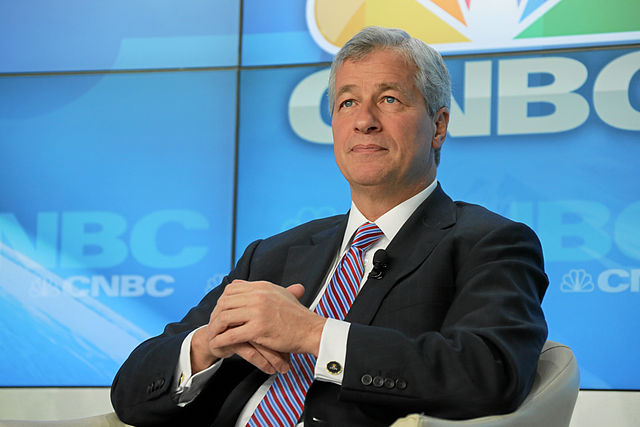Shipping costs are rising all over the world, striking a huge blow to international trade
07/19/2024 / By Kevin Hughes

The impacts of restrictions on shipping in the Red Sea and Panama Canal are now being experienced around the world.
Conflicts, economic downturns and restrictions on shipping all over the world are causing shipping costs to surge, straining the free flow of international trade.
In the Middle East, for nearly 10 months now, Houthi forces from Yemen have been assaulting ships in the region for their owners’ or operators’ connections to Israel. (Related: Yemeni military reiterates warning to Israeli-linked ships not to pass through the Red Sea after claiming to have sunk 2 ships that violated the blockade.)
In retaliation to the Houthi attacks, American and British military vessels have regularly targeted militia positions in Yemen over the last couple of months. Furthermore, warships from two international coalitions are operating in the region to protect maritime traffic along the Yemeni coast.
Worldwide trade has been under tremendous pressure since the Israel-Hamas war erupted in October.
The outgrowth of the conflict into the Red Sea has meant greater freight expenses and higher charges for securing commercial trade goods. Shipowners are met with bigger insurance premiums as the danger of losing a vessel has drastically grown most of all in the Red Sea.
Additionally, moves to evade the Suez Canal for safety reasons and instead cross around the Cape of Good Hope, have greatly raised travel times and led to substantially greater fuel consumption.
The Drewry World Container Index, which watches the freight market, reported that within the third week of June alone shipping prices for a 40-foot standard container leaped seven percent, up an astonishing 233 percent in comparison to the same time a year ago.
A report by Container Xchange notes that shipping costs worldwide soared in the first half of 2024, defying the traditional trend of costs going down during off-seasons.
Asia particularly the Middle East and India Subcontinent regions were the regions that saw a major rise in container prices since October last year because of the Houthi attacks.
Container prices continued to be stable or decreased, reflecting an abundance of containers in traditional import destinations.
These prices have now started to move upwards with the average container prices continuing to increase through May and in June.
Hong Kong and Vietnam experienced the largest month-on-month percentage surge of 35 percent from May to June for trading containers, followed by China (27 percent), Russia (24 percent), Taiwan (23 percent) and Malaysia (23 percent).
India also encountered a rise in average container prices, increasing by 21 percent from May to June this year.
In Singapore, while there has been a steady increase of 31 percent in container prices since October 2023, the rise from May to June was a moderate seven percent.
In terms of the effect of the Houthi attacks, China dominated by a significant jump at 78 percent container price increase from October last year to June, followed by Hong Kong (77 percent), Spain (42 percent), Uzbekistan (40 percent) and Thailand (35 percent).
Malaysia (29 percent), the Netherlands (29 percent), Taiwan (28 percent) and Vietnam (25 percent) followed the group of largest price increases since October for container prices.
China and Hong Kong have the highest average container prices presently around the world with $3600 and $3124, respectively.
Shipping companies are forced to become more flexible
Simon MacAdam, an analyst at the London-based financial consulting firm Capital Economics, said shipping companies are being forced to become more flexible.
“The shipowners have seemingly adapted quite well to the situation, considering the limitations on using the Suez Canal,” MacAdam said in an interview with DW, adding that costs shortly fell this spring “after skyrocketing in January.”
As of now “they are starting to rise again,” indicating there is no reason to anticipate any cost relief.
“Another driver seems to be that importers are currently moving up orders to ensure they have enough goods in stock throughout the year. But with ships being rerouted around the Cape of Good Hope further price spikes are more likely,” the Capital Economics expert added.
Jan Hoffmann, a trade expert at the United Nations Conference on Trade and Development, also blames longer travel times around Africa for increasing expenses.
“The detour around South Africa requires more ships to maintain supply. The average travel distance for a container in 2024 is nine percent further than it was in 2022,” Hoffmann said in an interview with DW.
As ships spend more time at sea, more shipping space is needed and that means shipping companies have to lease or buy more vessels and hire more personnel.
Follow Collapse.news for more stories about problems in the global shipping industry.
Watch the video below about Yemen announcing a shipping blockade to Israel.
This video is from the InfoWarSSideBand channel on Brighteon.com.
More related stories:
Shipping cost from Asia to US West Coast drops 84% year-over-year as consumer demand plunges.
Shipping costs to the US surge as supply chain crisis continues to accelerate.
British merchant ship abandoned in Red Sea following Houthi missile strike.
Sources include:
Submit a correction >>
Tagged Under:
Bubble, chaos, Collapse, debt bomb, debt collapse, economic collapse, economic riot, economics, economy, finance riot, Houthis, Inflation, international trade, market crash, money supply, Panama Canal, Red Sea, risk, shipping, shipping costs, supply chain, terrorism, trade, World War III, Yemen
This article may contain statements that reflect the opinion of the author
RECENT NEWS & ARTICLES
COPYRIGHT © 2017 BUBBLE NEWS




















